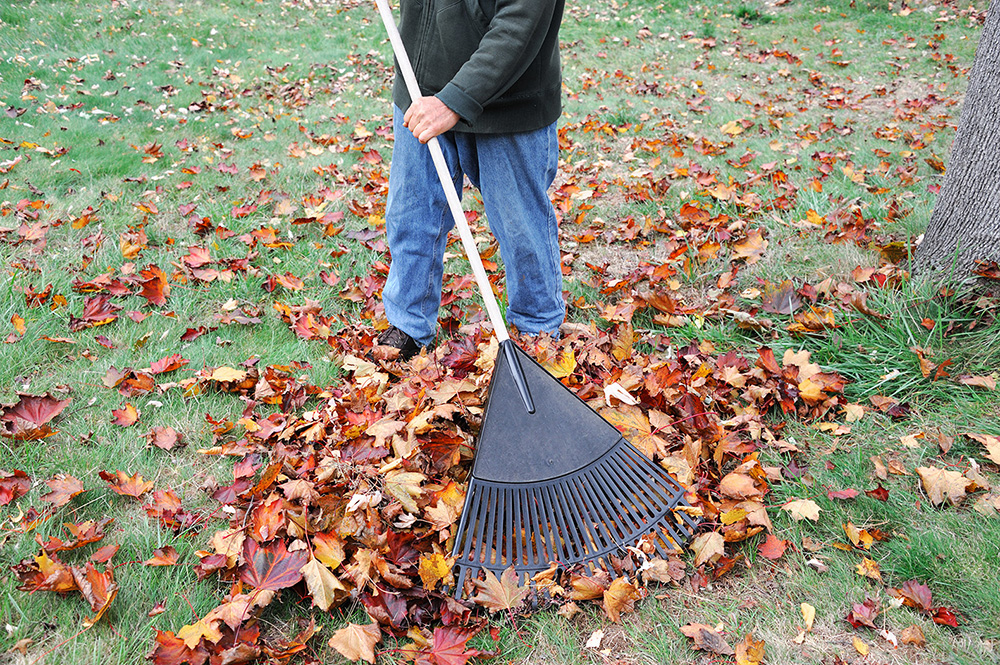The bright colors of red, yellow, and orange leaves hanging from the trees this time of year only means one thing…raking leaves. This activity, while being tedious and a necessity to keep your lawn healthy, can also take its toll on your body. Raking leaves requires a great deal of upper body and core strength and endurance to perform. However there are several steps that we can take to prevent injuries during this yearly activity.
Raking leaves requires use of our upper body with the primary muscles involved being the biceps, deltoids, rotator cuff, parascapular muscles and forearm muscles. It is important to warm up these muscles before and after raking. Simple exercises such as arm circles, pendulums, forearm and upper trap stretching will help to loosen these muscle groups and ready them for activity. Of great importance during the act of raking is maintenance of proper posture. This requires us to keep our head upright and shoulders back rather than hunching forward with our eyes towards the ground. Keeping good posture will prevent rotator cuff impingement, strain on our neck and upper back as well as putting our upper body at the greatest mechanical advantage to create greater force and utilize less energy while raking.
Our trunk and core is constantly tested during raking. As we sweep the leaves into position we are rotating our lumbar spine and hips to generate force to move piles of leaves. This puts a great deal of strain on the obliques, glutes, and hip rotators as well as our lumbar extensor muscles to maintain upright posture. Once we have the leaves perfectly positioned comes the most taxing part of raking: picking up all those piles of leaves we just made. The most common mistake made is bending straight over at our lumbar spine to pick the leaves up. This act compromises your lumbar spine, predisposing it to potential injuries from simple sprain/strains of the joint and surrounding muscles to worse injuries such as herniated discs and sciatica. In order to prevent these potential damaging injuries it is vital to squat and bend at the knees, not the waist, and maintain and flat back as we bend and lift. Also performing simple exercises such as hamstring, knee to chest, and trunk rotation stretches will further reduce the risk of injury. Remember to take rest breaks as needed and drink plenty of water to stay hydrated
Kyle Branday, MSPT, CAP, is a Partner at Amity Physical Therapy located at 1 Bradley Rd in Woodbridge, CT. Kyle has a wide ranging experience working with patients of all ages and ability levels and diagnoses orthopedic and neurological nature. He is certified to perform both Acupuncture and Dry Needling. Kyle can be reached for consultation at (203) 389-4593. www.amitypt.com

